Introduction To The Catalan Countries of Spain
The Catalan Countries of Spain include Catalonia, Valencia and the Balearic Islands. A number of factors enable rich and diverse amphibian populations to thrive in these regions: altitudinal variation; the diversity of landforms; the type of geological substrate; exposure to prevailing winds; variation in distance to the sea; climactic variability; and numerous plant communities. Below we introduce you to some of the frogs of the Catalan Countries.
Common Midwife Toad (Alytes obstetricans)
This is a species of small toad. In terms of size, adults measure between 45 and 55 mm. The eyes have a vertical pupil and a golden iris with black dots. Starting behind the eye there is a row of aligned warts, which can sometimes be orange, that extends across the dorsolateral region.
There are toad populations from sea level all the way up to 2,300 m in the Pyrenees. Although their ecological parameters are very wide and they can be found in a variety of habitats, the Common Midwife usually inhabits forested area with tree cover and high humidity. This species is most active during the night. The estrus usually begins in February and continues into the spring before being interrupted during the warmer months and then reestablished in October.
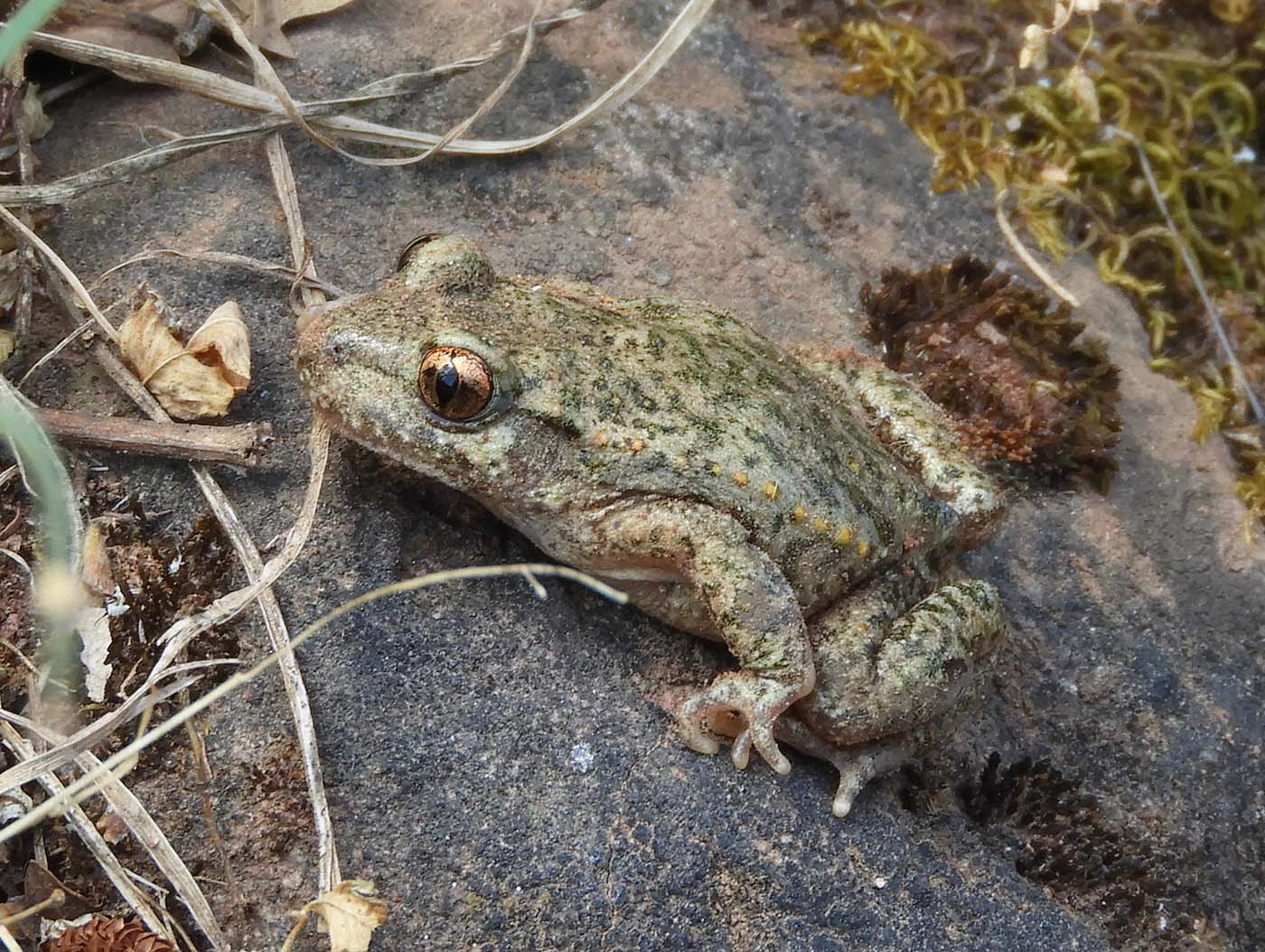
Common Midwife Toad (Alytes obstetricans) photo by Sara Abad Borraz
Mallorcan Midwife Toad (Alytes muletensis)
This species is the smallest anuran in Catalan countries. Adults measure between 29 and 38 mm. The pupil is vertical and the iris is gold with black staining. The Mallorcan Midwife Toad is an endemism of Mallorca, exclusive to the Tramuntana mountains. This species is very water-dependent, so, it tends to be found in areas with high rainfall and it is usually located on vertical side walls, near streams. This species tends to stay in a small area and does not stray more than 200 m from their breeding site. Their activity occurs during the first hours of the night and during the estrus the males sing from the burrows and the females respond with a similar song and then the females go looking for them.
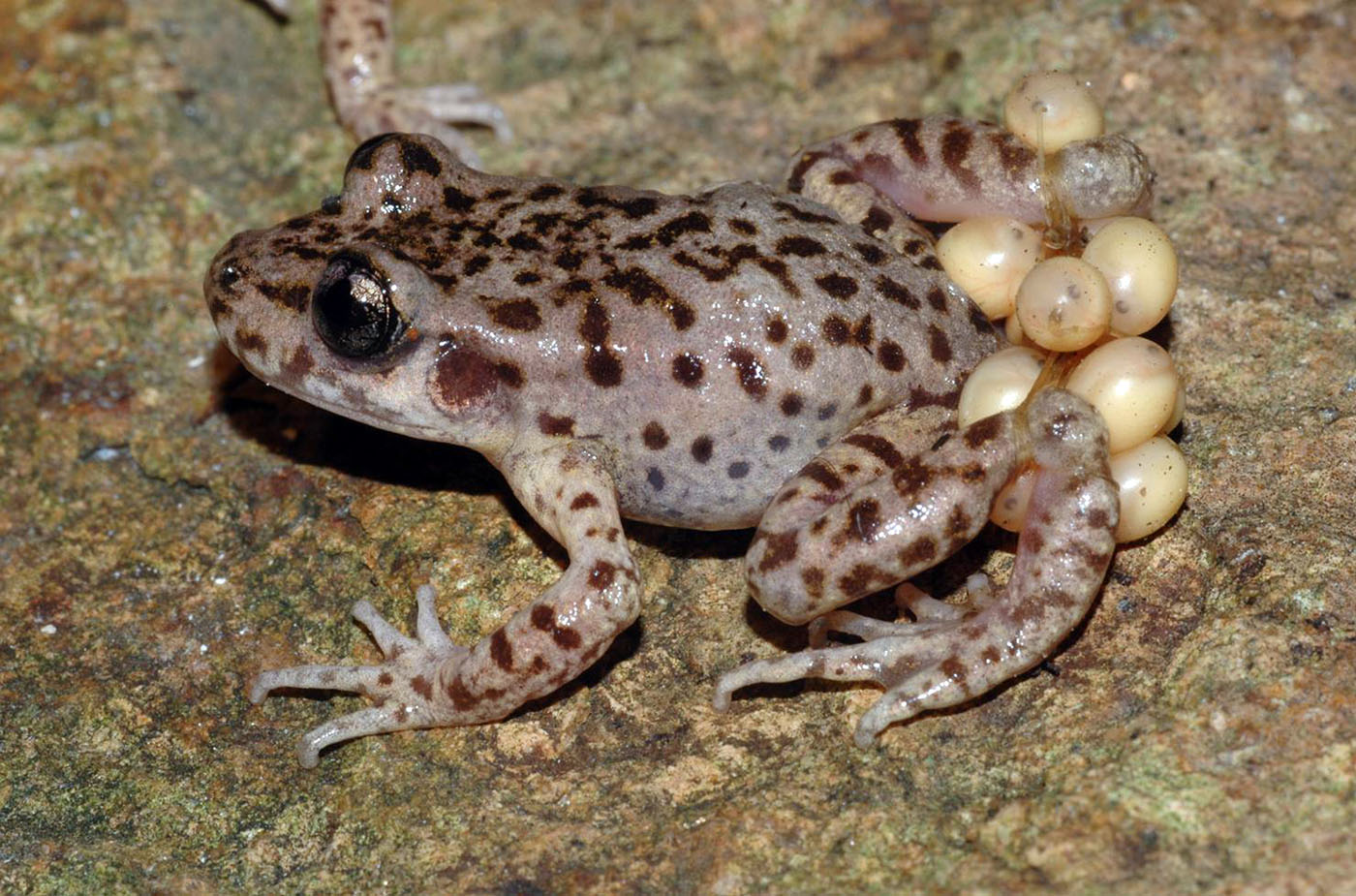
Common Midwife Toad (Alytes obstetricans) photo by Samuel Pinya.
Painted Frog (Discoglossus pictus)
The Painted Frog is a species with hardy aspect, measuring between 60 and 80mm. The eyes clearly protrude above the head and the pupils may be in the form of an inverted teardrop or rounded. This species usually has dark spots that are tend to be large and circular, on a background of brown, gray-green or orange colors. This species can inhabit a number of diverse Mediterranean environments, but they are typically found in the Mediterranean lowlands, occasionally reach up to 1,250 m above sea level, and they frequent water areas with scarce flow in order to reproduce. Their activity is usually nocturnal but they can also be active during the day among the vegetation. The reproductive period runs from January to March, but it can also extend throughout the year.
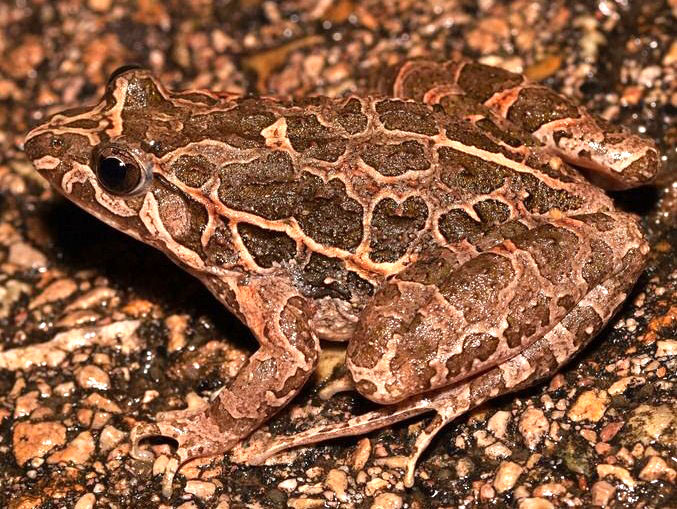
Discoglossus pictus in Girona. Photo by Marcel Nadal.
Western Spadefoot (Pelobates cultripes)
The Western Spadefoot is a toad that measures between 65 and 90 mm, with the females of the species tending to be larger. Their skin is typically smooth, but they can also have a few small granules scattered over the dorsal region and the sides. The eyes are large, with protruding orbits, and the pupil is vertical. In the plantar area of the limbs, it presents a well keratinized nail or spur of black color, which is used to excavate. They live in the Mediterranean lowlands, in soft and not very compacted soils. They are active at night and the estrus goes from February to April. In times of inactivity they remain buried in the substrate.
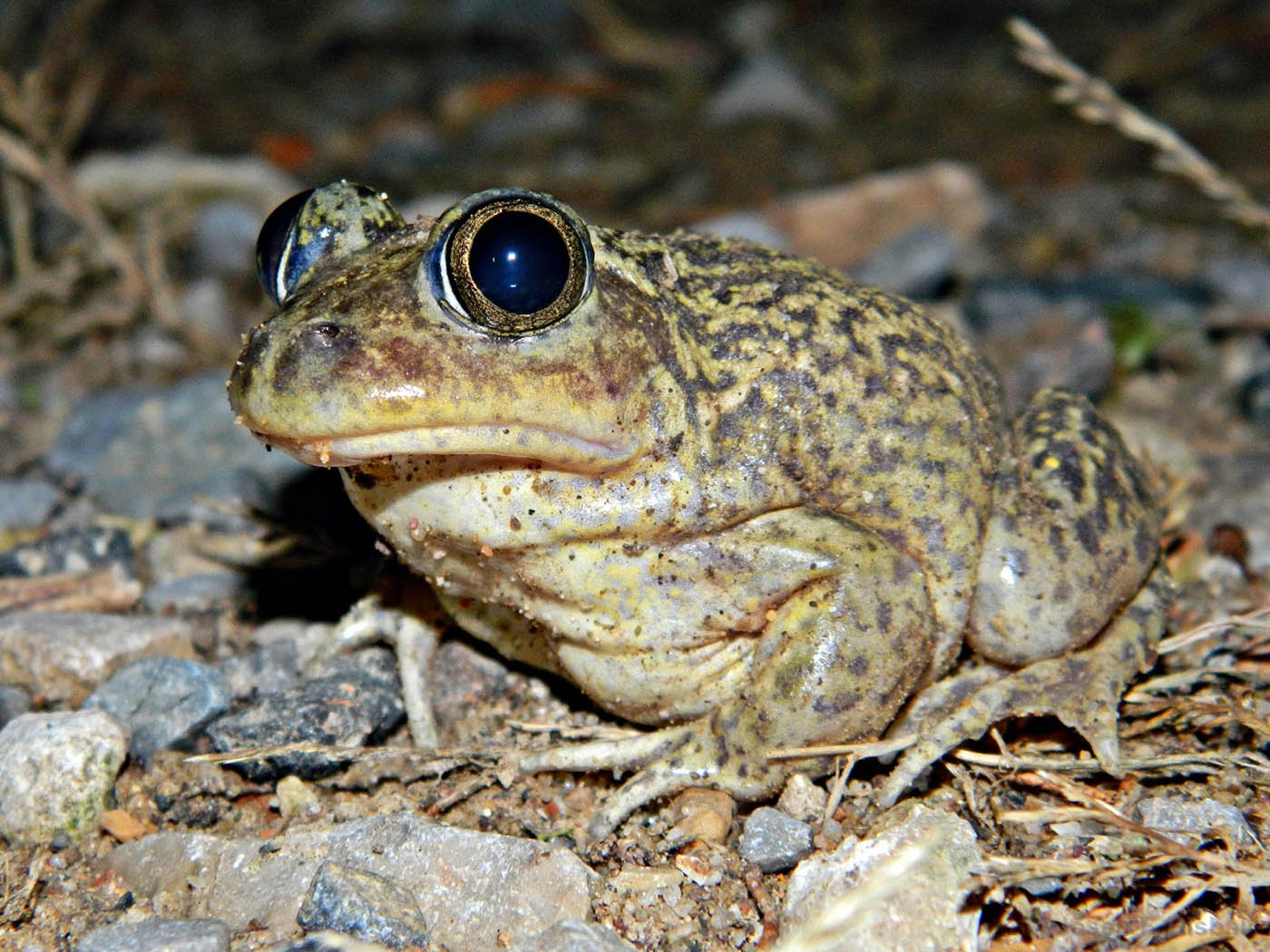
Pelobates cultripes in Alt Empordà. Photo by Paleoherpetologia.
Common Parsley Frog (Pelodytes punctatus)
The Common Parsley Frog can measure up to 45mm. The eyes are prominent and the pupils are elliptical and vertical. This species presents with a succession of warts that goes from the dorsolateral area to the cloaca region. The background colors are green or brown, with dark green spots. The limbs are long and adapted to jumping. This species tends to reside in lowland Mediterranean environments, but it can also be found in the mountains. They prefer seasonal ponds to reproduce and cannot stand brackish waters. This frog is a species that is predominantly nocturnal and the estrus goes from January to April, although it is variable according to the annual conditions and the geographical region in which they reside.
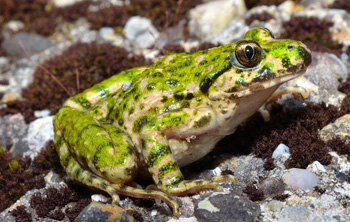
Pelodytes punctatus. Photo by D. Escoriza.
Common Toad (Bufo bufo)
The Common Toad is the largest European anuran, measuring up to 22 cm. Their skin is thick and covered with warts. The pupil is elliptical-horizontal and the iris is orange or reddish. Behind the eyes there are prominent parotids. This species is present throughout the non-island Catalan territory and it is is usually found in moist deciduous forests, but it can inhabit diverse environments. It has nocturnal habits but during the reproductive period, which occurs between January and March, it can be found during daylight in the water after mating.
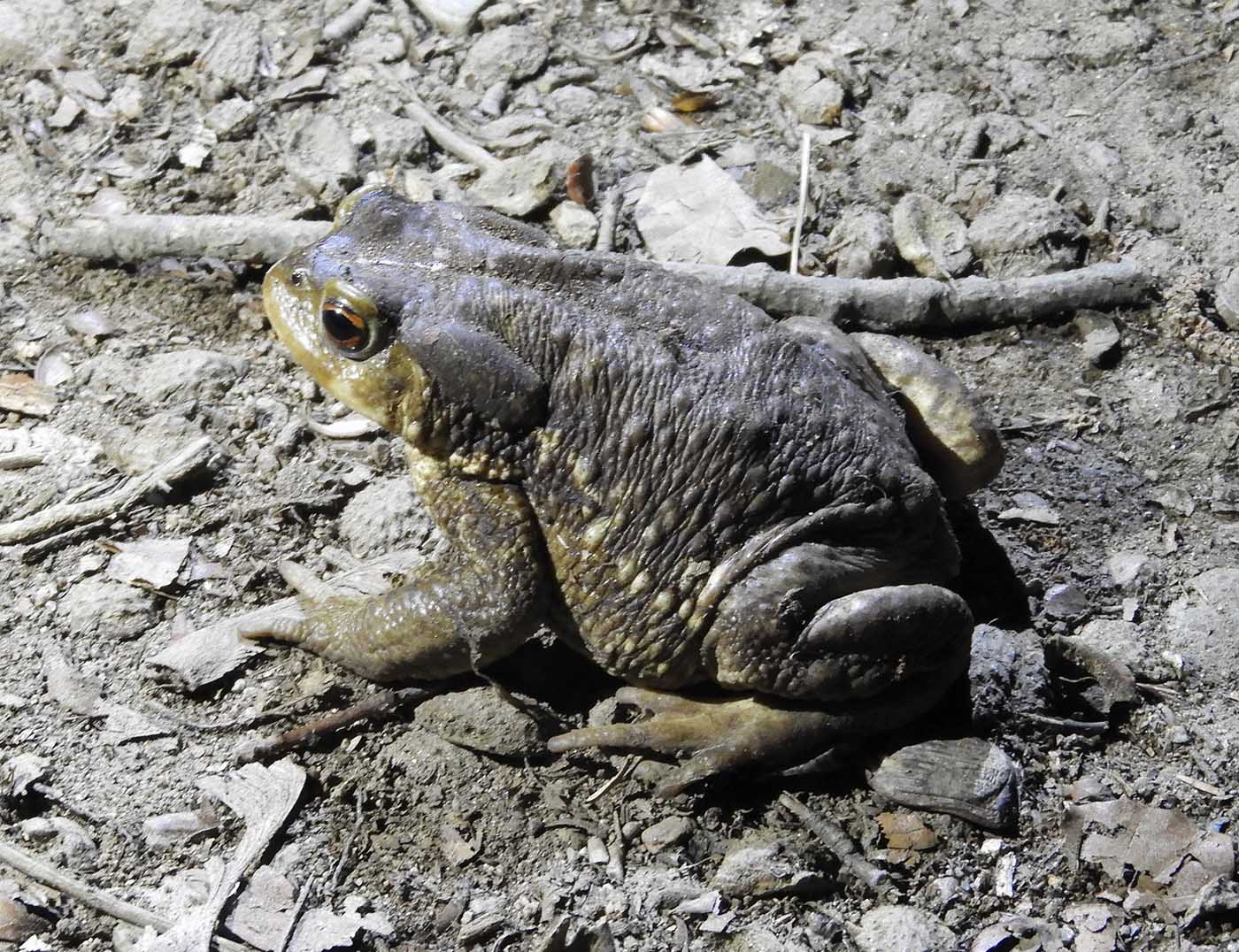
Bufo bufo in Santa Fe del Montseny. Photo by Sara Abad.
Natterjack Toad (Bufo calamita)
This is a species of toad that typically measures between 50 and 70 mm and occasionally growing as large as 90 mm. The pupil is horizontal and the iris is green or yellow. Developed parotid glands extend behind the eye. The limbs are suitable for running. The Natterjack Toad mainly lives in the Mediterranean lowlands, but it also rapidly colonizes new habitats. This species prefers open sites with little vegetation cover. This species is typically nocturnal and their reproductive period goes from February to May, but they can go into estrus after a rainy episode. They prefer seasonal ponds to breed.

Bufo calamita. Photo by Alfredo S. Tójar.
Balearic Green Toad (Bufo balearicus)
The Balearic Green Toad measures between 6 and 10 cm. The skin on their back is covered with warts and parotid glands in parallel arrangement. The iris is usually stained black on a gold-green background. The coloration of this species is light tones with irregular green spots on the dorsal region. This species can only be found in the Balearic Islands and it resides in a number of different environments, including everything from sandy locations on the coast to karst and stony areas. This toad is mainly a nocturnal species and their mating season occurs between January and March.
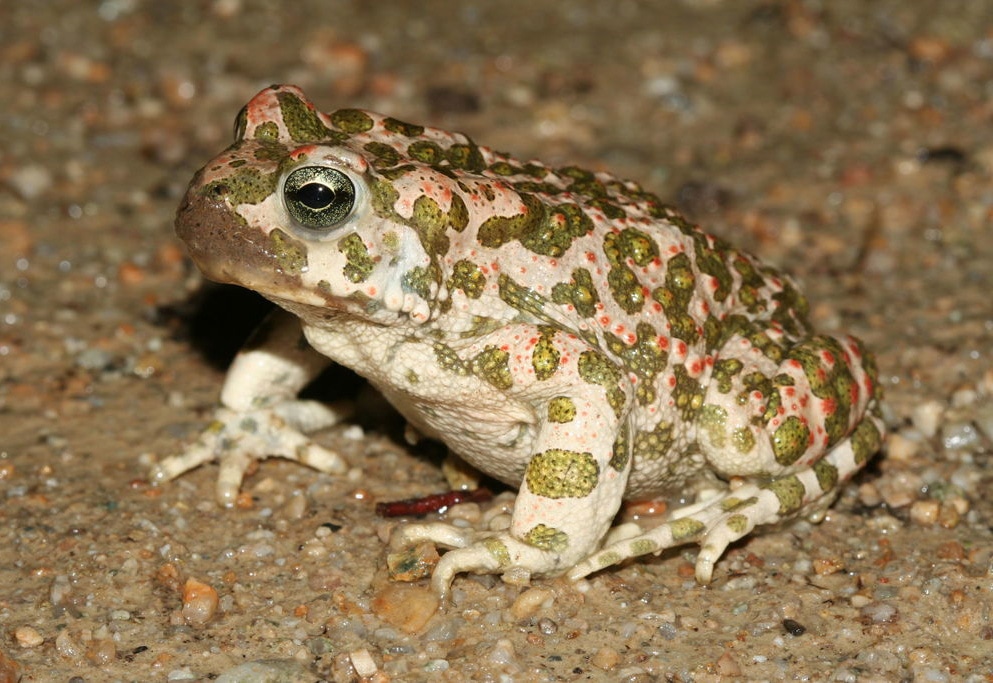
Bufo balearicus. Photo by Xavier Rufray.
Mediterranean Tree Frog (Hyla meridionalis)
The Mediterranean Tree Frog can measure up to 6 cm. The pupil is elliptical-horizontal and the iris is golden. The eardrum is visible and black. The skin is typically smooth and green, although blue specimens have been found in some areas. At the end of their fingers, this species has adhesive cushions that allow it to climb through the vegetation. It tends to live in humid spaces with quite cover of trees and bushes, near breeding points. It is found in the Mediterranean lowland, from sea level to 1,100 m, and in the Balearic Islands is only found in Menorca. The estrus take place between March and May.
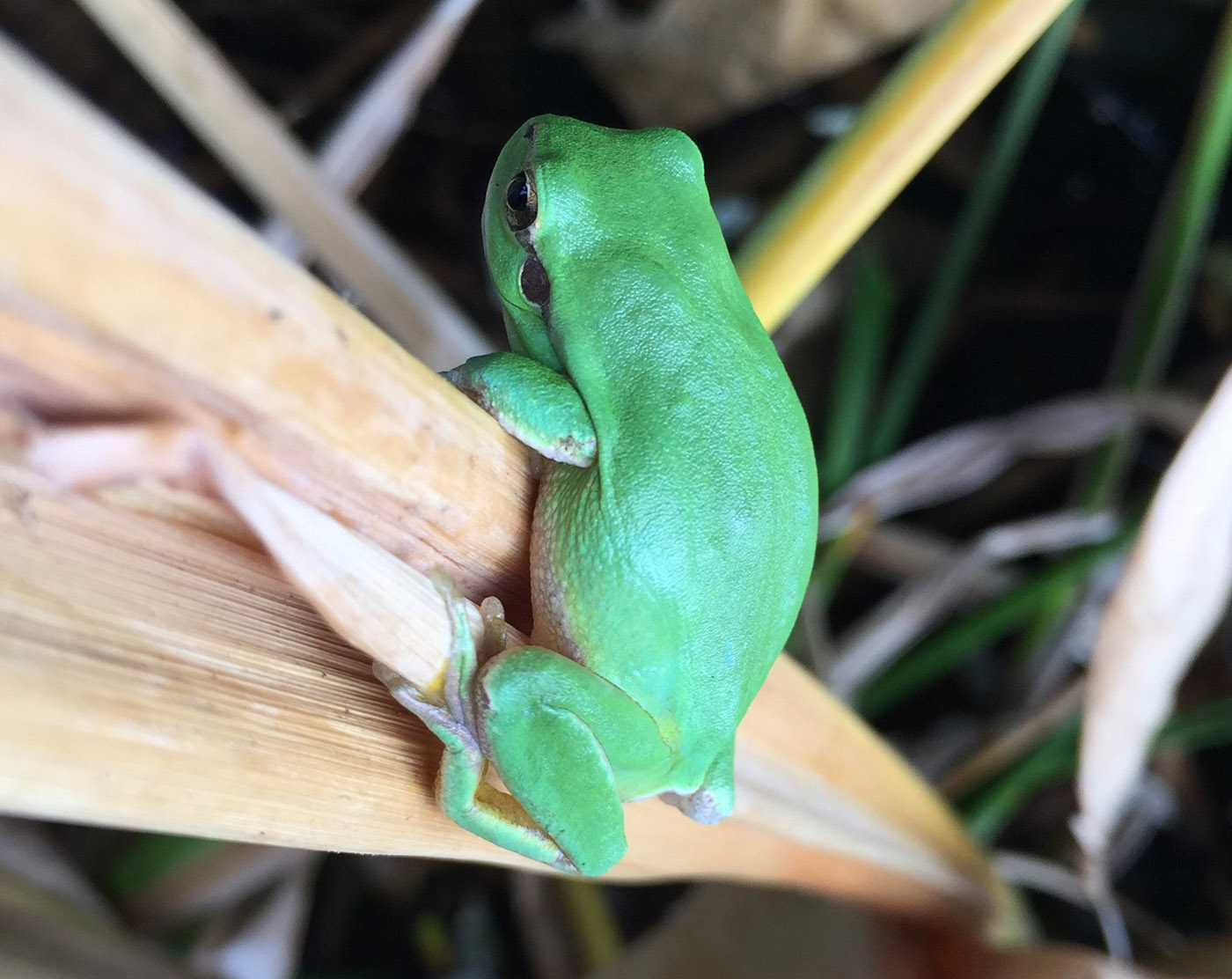
Hyla meridionalis in Barcelona city. Photo by Sara Abad.
Common Frog (Rana temporaria)
The common frog is usually not taller than 9 cm. The eardrum is visible and has a diameter smaller than that of the eye. Dorsally it presents brown and orange tones with an irregular dispersion of dark brown spots. This species has a marked dark spot behind the eye. The Common Frog lives in places with cold weather (T <12°C, rainfall> 800 mm) and it is generally found in the humid oak and beech forests of eastern Catalonia. It is both diurnal and nocturnal. The reproductive period is usually between January and March, but in the areas of the Pyrenees it changes according to the altitude and the thaw.
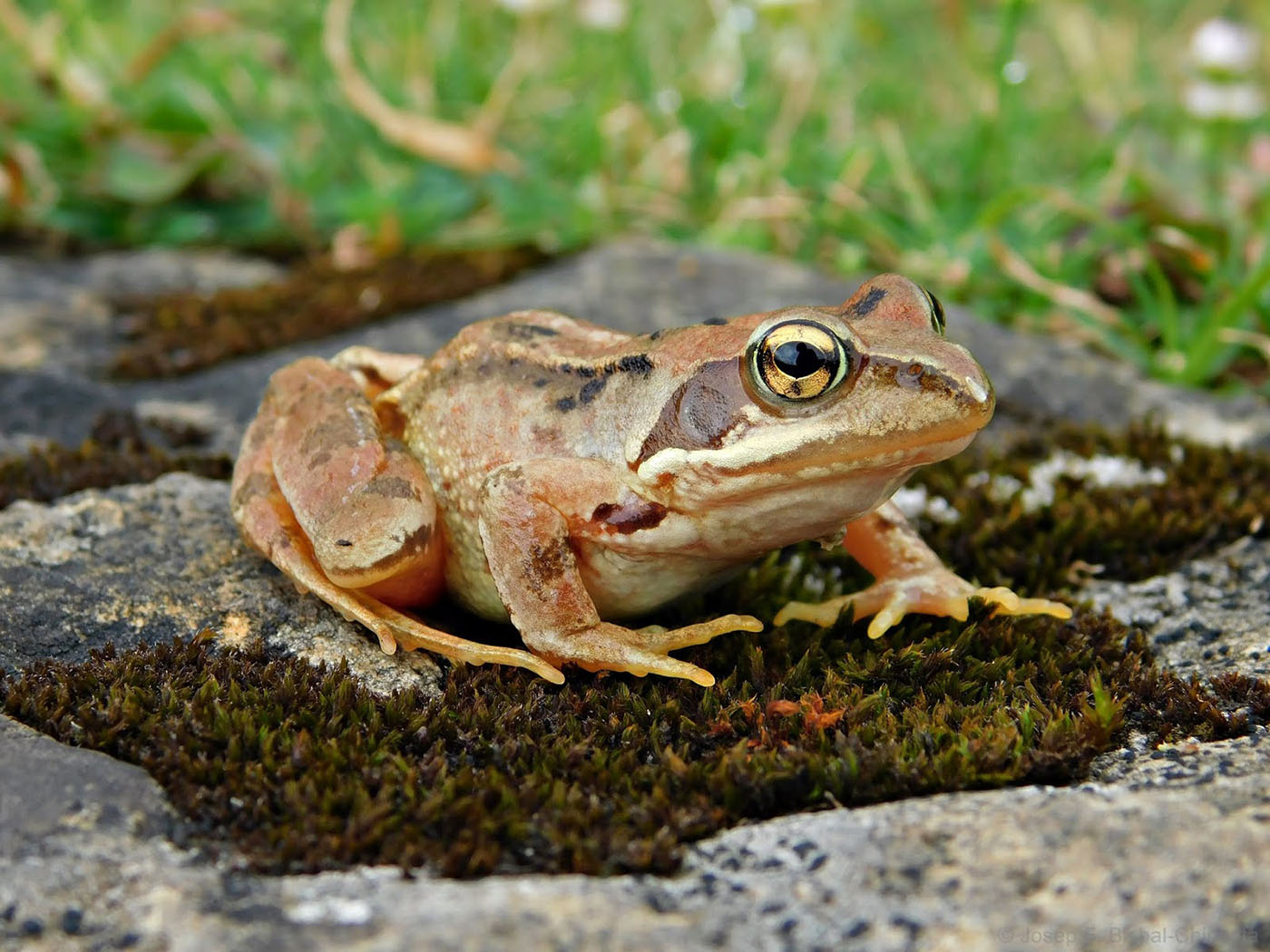
Rana temporaria (adult). Photo by PaleoHerpetologia.
Perez’s Frog (Pelophylax perezi)
This species of frog rarely exceeds 110mm in size. It has prominent eyes with golden irises. The limbs are adapted to jumping and swimming. The dorsal coloration is very variable, from green to brown tones, with dark spots. It is found in Mediterranean lowland environments and in medium mountain. It is present in a wide range of aquatic environments. It is both diurnal and nocturnal. The reproductive period begins between March and June and extends throughout the summer. The breeding sites are preferably permanent bodies of water, from which they do not tend to move away.
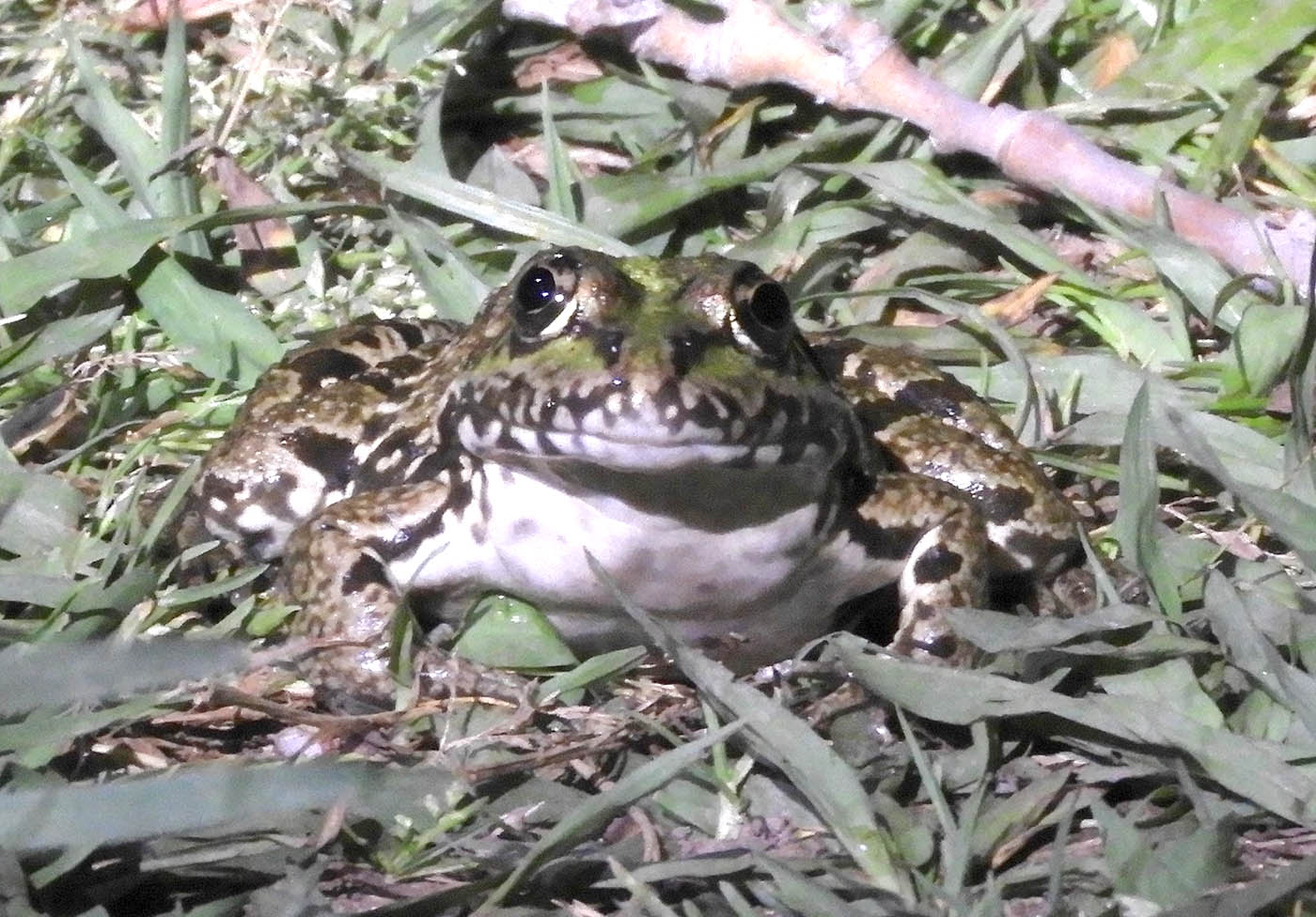
Pelophylax perezi in Barcelona. Photo by Sara Abad.
Thanks to Sara Abad Borraz for preparing this article. Sara is from Barcelona and is licensed in Environmental Sciences in the University of Barcelona. She is studying her Master’s degree of Biodiversity, focused on amphibians. She has a lot of concern about amphibians and want to help in their conservation.



